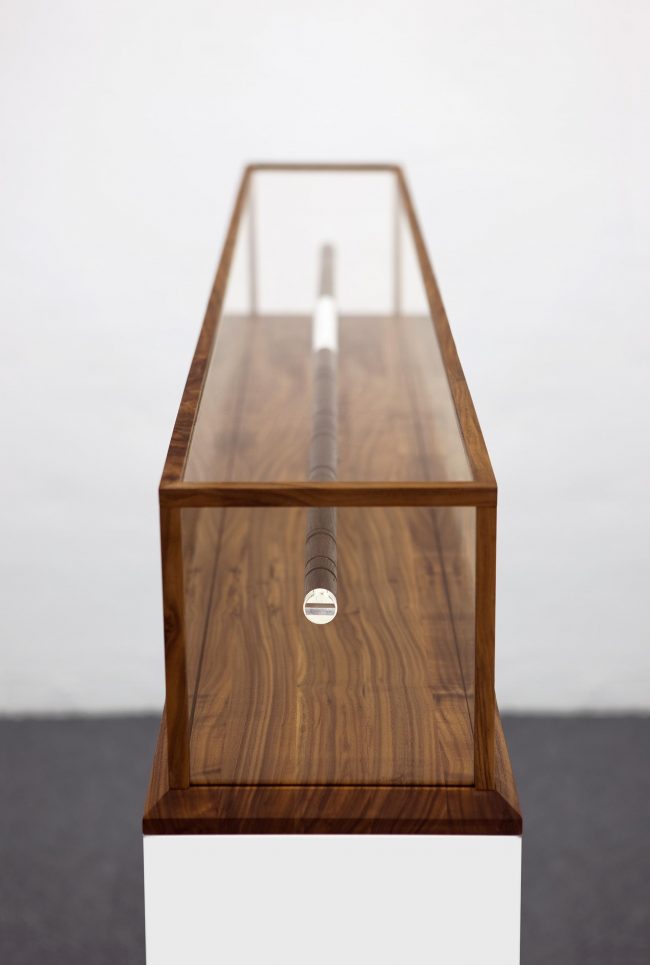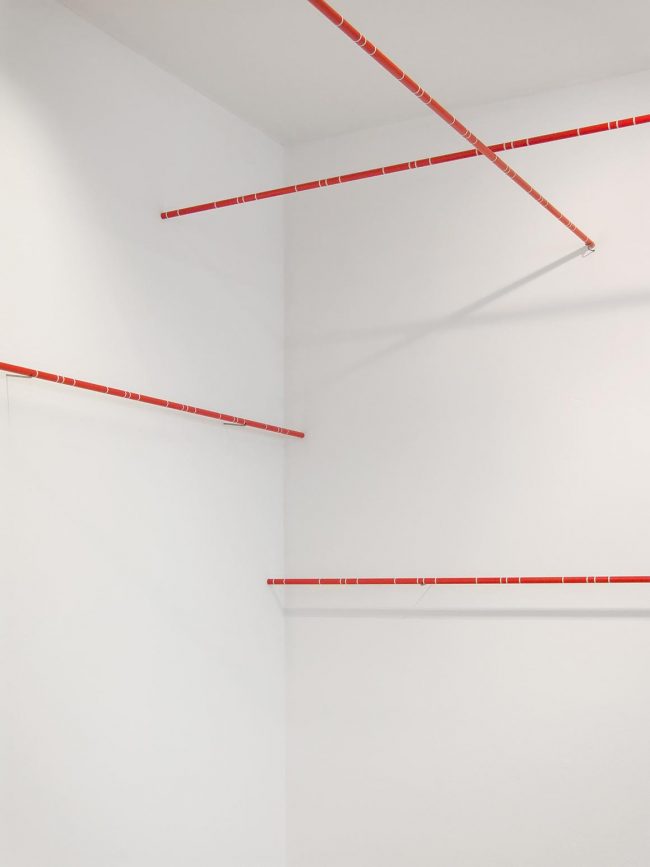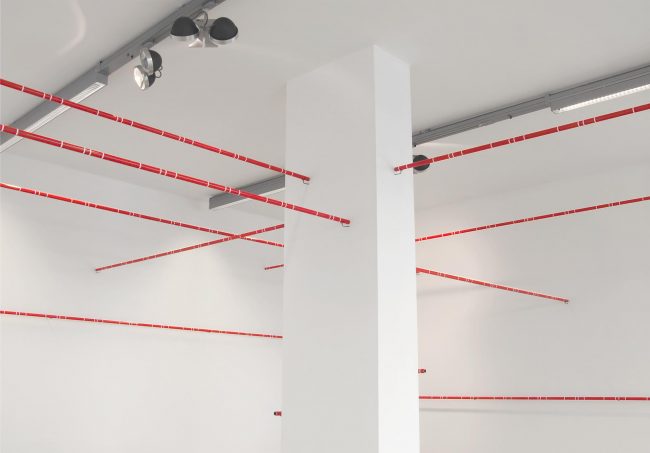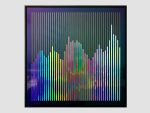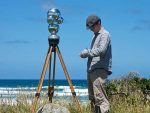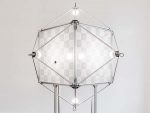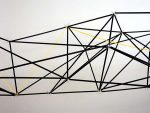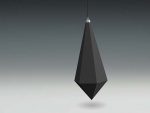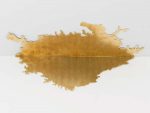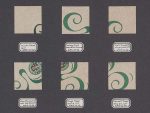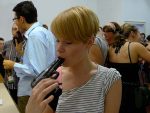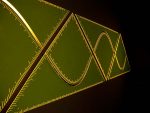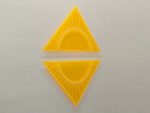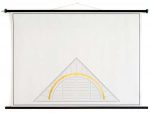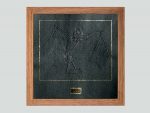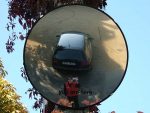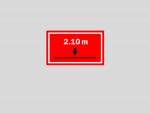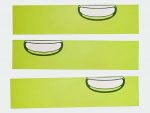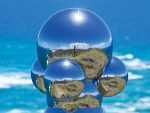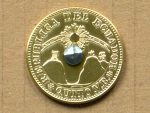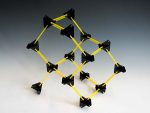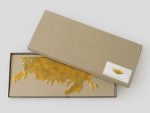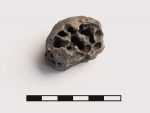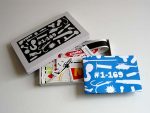HI-cubit
HI-cubit1, 2010, wood, glass, steel, brass, gold, silver, marble, bone, 131 × 134 × 22.5 cm
HI-cubit2, 2010, aluminum, reflective vinyl, steel, variable dimensions
Two-piece work consisting of:
1. A rod measuring 1182.5 mm long and 21.1 mm in diameter is positioned in the center of the exhibition room set on a white pedestal in a wooden display case. The rod is divided into segments of varying length of different materials.
2. Affixed to all the exhibition walls in the room and between the opposite walls there are red rods with a scale of white markings.
The surface of the rods consists of red and white reflecting material, which lends them the decidedly technical appearance of measuring instruments. By virtue of these measuring rods the width of every wall surface, the distances between the opposite walls and the height of the room are measured.
The scale on the rods is a series of markings, which are produced through the subdivision of the rod in the display case; the rod acts as the reference measure for measuring the room, as a reference scale.
Background to the subdivisions on the measuring rod:
The references underlying the scale on the measuring rod are lengths and ratios thereof, derived from the emission spectrum of the chemical element hydrogen. The one is the relationship between the distances of the visible emission spectral lines of hydrogen. The other is the wavelength of a certain spectral line in the radio waves frequency range known as the hydrogen line or HI Line. Hydrogen is the most frequently occurring chemical element in the universe.
In its subdivision the rule is modeled on the subdivisions of pre-metric linear units of measure. The ratios of the subdivision into 28 digiti (fingers) corresponds to 1 cubitus (cubit), 16 digiti corresponds to 1 pes (foot) and 4 digiti corresponds to 1 palma (palm) refer to pre-metric measuring systems, which had a practical foundation. If you measure off the distance of a foot on a rule using a piece of string you can arrive at the subdivisions by repeatedly folding the string and halving the length measured off. Folding it twice produces the length of a palma to 4 digiti, folding another two times the length of a digitus. 7 palmae produce the cubit (cubitus) to 28 digiti.
Both the visible spectral lines but also the HI line itself are used for measuring instruments though in a different manner. Given the fact that every element has its own characteristic spectral lines they are used to analyze constituents, e.g., in spectroscopy.
Spectral lines and in particular the HI line are also employed in a different way to measure length. For example, in astronomy, it can be used to calculate the Doppler shift and thus to measure the distance to a certain point in our galaxy.
Spectral lines
The radiation of certain wavelengths is emitted when an electron falls back from a higher to a lower energy level of its path around the atomic nucleus. When this radiation is fanned out as happens when it passes through a prism characteristic spectral lines are produced for every element. In sunlight with the aid of a prism you can see the visible spectrum fanned out to the colors of a rainbow.
In the hydrogen emission spectrum there are only four lines in the range visible to the human eye. In addition, there are spectral lines in the infra-red and ultraviolet range but also the HI line in the radio wavelength range (UHF) of the electromagnetic spectrum.
HI Line
The hydrogen line is a spectral line in the hyperfine structure of neutral hydrogen, which occurs owing to the difference in energy between the parallel and anti-parallel spin-orientation of the electron relative to the spin of the proton with a frequency of some 1.42 gigahertz. This is equivalent to a wavelength of roughly 21.1 cm.



